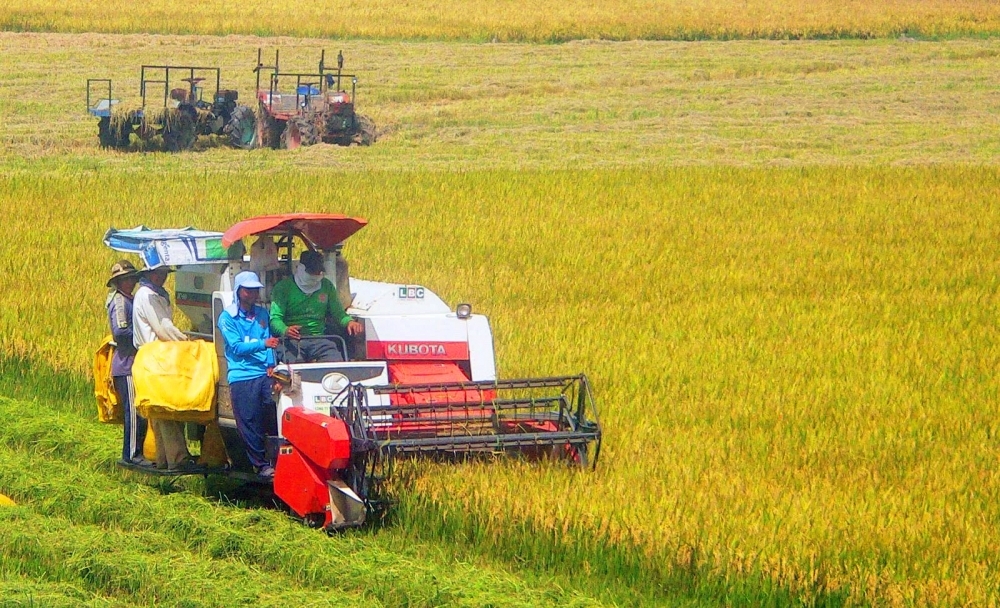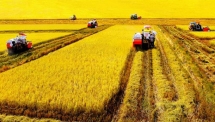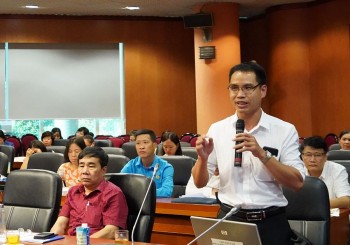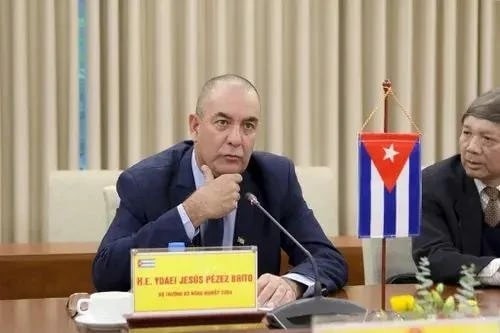Rice Production Presents Great Opportunities For Circular Economy Development in Vietnam
| Switzerland helps Vietnam apply remote-sensing technology in rice production | |
| Ample Room for Rice Export From Vietnam to EU |
Reports from the Ministry of Agriculture and Rural Development of Vietnam show that the Mekong Delta region produces 24 - 25 million tons of rice each year. Along with millions of jobs created, tens of millions of tons of straw, millions of tons of rice husks also remained as rice by-products.
They can be considered a waste of resources if not recycled and reused effectively. In contrast, it will bring benefits to farmers and businesses, contribute to reducing greenhouse gas emissions and create added value for the rice industry if it is applied in a model of circular agriculture.
 |
| (Photo: Getty Image) |
Improving circular economic efficiency through the 1 million hectare project
In particular, the Mekong Delta region contributes up to 90% of Vietnam's rice exports each year. "The localities in the region are focusing mainly on economic goals and food security without paying much attention to greenhouse emission reduction issues," said Le Thanh Tung, Deputy Director of the Department of Crop Production (Ministry of Agriculture and Rural Development of Vietnam).
Tung pointed out that the Mekong Delta region generates about 24 million tons of straw each year, yet only 30% of the straw, equivalent to more than 7 million tons, is collected. The remaining 70% is burned or buried in the fields. This has caused rice waste and polluted the environment, increasing greenhouse gas emissions, he stressed.
Circular agriculture contributes to increasing income and reducing greenhouse gas emissions. Taking advantage of by-product sources will enhance the rice industry value chain.
"To develop a circular economy, it is necessary to build a database and localities must develop plans and develop straw management models towards circular agriculture, towards collection. By removing 100% of straw from fields by 2030, we can contribute to implementing Vietnam's commitment at COOP 26 on climate change," said Tung.
He believes that information, data and technology can provide great support for current rice circular agriculture. The existing data needs to be completed, more systematically.
"We also need to disseminate this data to all categories, local management agencies and farmers for common awareness and for spreading the will to develop circular agriculture," Tung said.
Assoc. Prof. Dr. Nguyen Van Hung, Senior Expert of the International Rice Research Institute (IRRI) commented that Vietnam's rice industry has a lot of potential to enhance the value of the industry chain associated with reducing greenhouse gas emissions. The process will require policies to support the development of circular agriculture for people, technology cooperatives, and output markets for products.
“Circular agricultural economy is part of the 1 million hectares of rice program. IRRI is willing to cooperate and share to jointly develop the business model for some of the technologies that IRRI and its partners had created. They are straw rolling machines, fertilizer production, straw as food for cows,... In terms of technology development, IRRI supports its partners in networking, in-depth development, new technology-based and database-based business models," Hung stressed.
Circular economy chain needs to attract more businesses
Phan Van Tam, Deputy General Director of Binh Dien Fertilizer Joint Stock Company, said that in order to take advantage of by-product sources at low prices and create competitiveness, it is necessary to have overall orientation and planning for each region. In addition, special attention needs to be paid to transportation infrastructure for transporting raw materials from production areas to processing factories. Favorable transportation will contribute to reducing costs and creating competitiveness on the market.
An example of possible cooperation to take advantage of by-product sources from rice production shared by Deputy General Director Phan Van Tam is Binh Dien Fertilizer Joint Stock Company cooperation between IRRI.
“Binh Dien plans to cooperate with IRRI, together with scientists and a number of units in the Mekong Delta region to connect straw production cooperatives. The process will provide inputs for businesses that specialize in organic fertilizer production. The project is feasible if the location between the business with the raw material and the infrastructure of the production factory is convenient, with the lowest transportation costs so that the project can compete with imported products," said Tam.
Circular economy is the foundation for sustainable development of the rice industry
"The circular economy model will make good use of straw resources in rice production, avoiding burning straw in the fields and reducing greenhouse gas emissions," said Pham Thi Minh Hieu, Director of the Can Tho Department of Crop Production and Plant Protection.
Hieu informed that through the circular economy model deployed in Can Tho, it has been carefully calculated that if rice is cultivated in the traditional way, 1 hectare of people's income of VND 86 million/ha/year (about USD 3,400). But if we take products from straw to grow mushrooms and make organic fertilizer, people will increase their income to VND 133 million/ha/year.
“The goal of Can Tho's agricultural industry is to apply circular agriculture with many technical solutions, helping farmers reduce production costs, increase profits and protect the environment. Can Tho wants to replicate the sustainable economy model from straw in production areas of Can Tho and the entire Mekong Delta. "
Hieu believes the directions from the Ministry of Agriculture and Rural Development and support from international organizations can help the provincial agricultural industry to realize this goal.
Transforming Vietnam's rice industry according to the circular economy model is an urgent requirement amidst the threats of global climate change. Tran Thanh Nam, Deputy Minister of Agriculture and Rural Development, said that with the huge amount of rice by-products every year, Vietnam is fully capable of producing millions of tons of green biomass energy. This not only helps reduce pressure on natural resources but also contributes to protecting the environment and limiting the impact of climate change.
"Producing and reducing emissions according to the circular economy is very effective. Localities can learn and be ready to participate in the 1 million hectares of high-quality, low-emission rice program being implemented by the Ministry. With the guidance of the Ministry and the diligence of farmers, cooperatives, it is completely possible to develop and expand the model of circular agriculture in the Mekong Delta," said Deputy Minister Tran Thanh Nam.
With abundant by-products from the rice industry, Vietnam holds a great opportunity to become a model of a green and sustainable circular economy. This is considered a potential solution to help increase the value of the rice industry, while creating clean, sustainable energy and is an inevitable trend for sustainable development in the future. It is first necessary to have mechanisms and policies to encourage investment, technology transfer as well as support for people to participate in the process of developing a circular economy model.
 | Organic rice production models to affirm Vietnam’s export status The Mekong Delta is one of Vietnam’s key agricultural hubs, producing masses of rice, seafood, and fruits. Currently rice production occupies 54% of the total ... |
 | The Role of Circular Economy in implementing Vietnam's Net Zero goal A circular economy helps take advantage of used raw materials instead of consuming processing costs, minimize exploitation, and make the most of natural resources. It ... |


